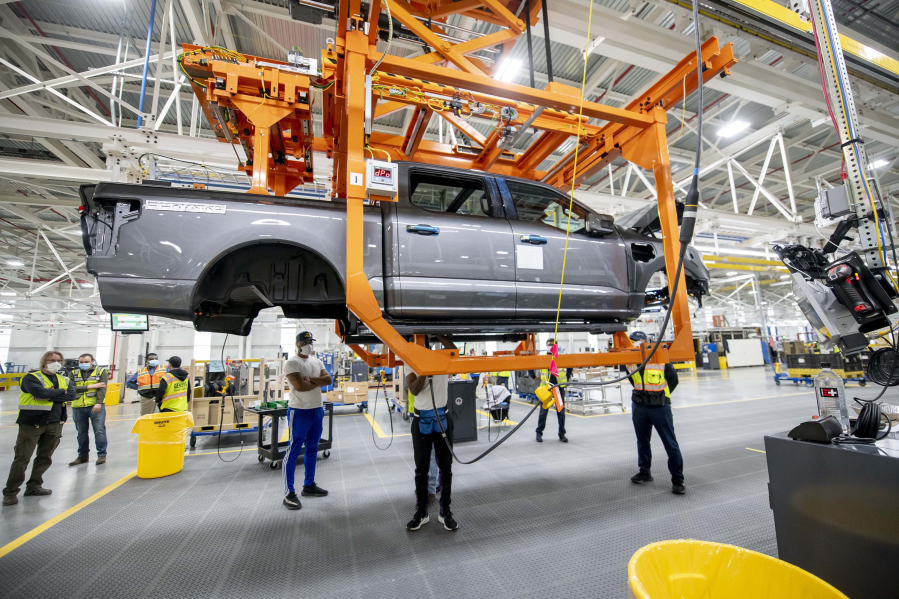U.S. payroll growth has topped estimates for 10 straight months in the longest streak in decades, a trend that, if extended, will boost pressure on the Federal Reserve to keep raising interest rates.
Beginning in April last year, the median forecast in each survey of economists fell short of the government’s initial estimate of payrolls by an average of 100,000 a month — the most in data compiled by Bloomberg back to 1998. Ahead of the February jobs report on Friday, the projection is for a 224,000 increase, which would be about half the pace seen in January.
Economists may have repeatedly underestimated monthly job growth because they’ve overestimated the impact of the Fed’s most aggressive interest-rate hiking campaign in decades. Companies are far less willing to dismiss workers they have worked so hard to employ after the pandemic.
“The expectation has been that the economy would slow down on the back of the Fed raising interest rates,” said Torsten Slok, chief economist at Apollo Global Management who pointed out the 10-month streak in a note last month. “That has simply not happened.”
Employers are still trying to hire for millions of open positions and unemployment claims are historically low. On the other hand, layoffs are swirling in a few industries and the Fed is projected to keep raising interest rates into the summer, which will likely weigh even more on demand and risk slowing hiring substantially.
The labor force is one of the last remaining hurdles in the Fed’s inflation fight. Steady job creation and wage growth have given consumers the wherewithal to keep spending and therefore keep prices elevated. Understanding its trajectory is key for policymakers who are trying to cool inflation without triggering a recession.
Here are some of the factors at play keeping payrolls surprisingly strong, and what might stir the pot going forward:
Demand for workers
Job openings stood above 11 million at the end of the year, and data out Wednesday are forecast to show a slight moderation in January. Vacancies have been most notable in sectors like leisure and hospitality as well as health care, while other data show manufacturers and small businesses have also struggled to fill vacancies.
Because labor shortages have been so acute, firms have been holding onto workers, a practice dubbed “labor hoarding.” The Fed alluded to this at its last policy meeting.
“If you have this labor hoarding dynamic continuing, it may keep the labor market stronger for a little bit longer into the cycle relative to what you’d normally think the lag to growth is,” said Brett Ryan, senior U.S. economist at Deutsche Bank AG. But “it’s really hard to pin down” the timing of the slowdown.
Read more: Can’t Find Workers? Blame Retirees. Or Immigration. Or Covid…
Few layoffs
While layoffs have been abundant in the tech sector — some 110,000 from November to January alone — that’s a small chunk in a labor force of nearly 166 million. They’re also largely unique to companies that expanded aggressively during the pandemic and have seen sharper declines in their stock prices, according to Goldman Sachs Group Inc. economists.
“These characteristics suggest that the companies conducting layoffs are not representative of the broader economy and that many of the recent layoff announcements do not necessarily signal a weaker demand picture that might have wider implications,” they said in a note.
A broader measure of layoffs across the economy remains below its pre-pandemic level, though it has ticked up in the past year, according to the Bureau of Labor Statistics. Applications for unemployment benefits remain low — less than 200,000 for seven straight weeks.
Part of the reason could be severance pay — JPMorgan Chase & Co. economist Daniel Silver estimated last month that jobless claims should be about 50,000 higher, according to their model, and severance payments may be delaying or preventing filing.
Out-of-work Americans may also just be getting snatched up quickly by other firms. The hiring rate, or the number of hires relative to total employment, remains above its pre-pandemic average. Deutsche Bank’s Ryan anticipates the hiring rate will look even stronger with Wednesday’s release when the latest revisions are incorporated.
Signs to watch
Payrolls recovered to their pre-pandemic level in the middle of last year, so it’s only natural for the pace of payrolls growth to moderate. Plus, the Fed’s rate hikes will probably accelerate the cooling trend.
That’s what the central bank is trying to engineer — a slower pace of hiring that eases wage pressures and is more consistent with a 2% inflation rate. But it’s a fine line to pull that off without putting undue harm on workers.
“If the breadth of layoff announcements broadens or the reemployment rate starts to drop quickly, these would signal cracks are forming in the labor market,” Ryan Sweet of Oxford Economics said in a note last month.



